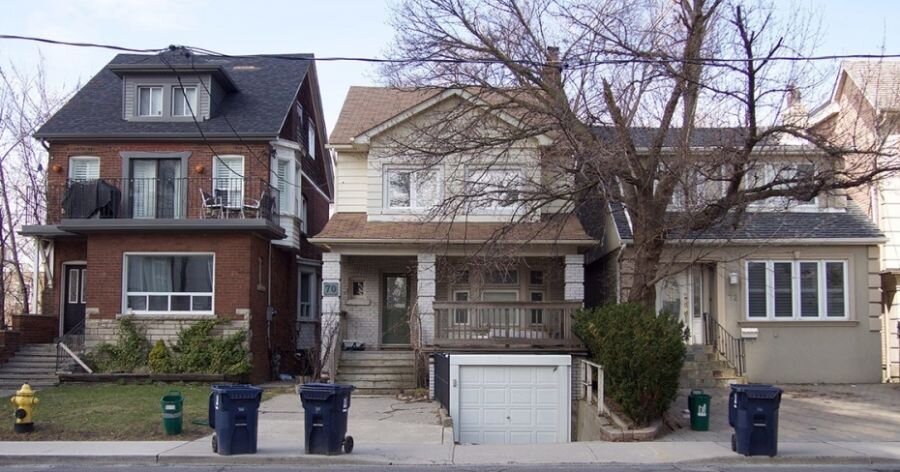Fixed versus variable mortgages: which is the better option in 2017?
By: John Shmuel on April 12, 2017
Mortgage rates in Canada haven’t been this low in a while.
Well, in 15 months to be precise. The last time brokers offered five-year variable rates this far below 2%, it was October 2015. The crash in oil prices had forced the Bank of Canada to slash its benchmark rate to 0.5%, amid ongoing layoffs by energy firms in Alberta and Saskatchewan.
A year-and-a-half later, the conversation has shifted. In February, I wrote about how mortgage rates have defied expectations and sit at a multi-year low right now. But two months later, it’s clear there’s a lot of upward pressure on lenders in the current market. The U.S. Federal Reserve is normalizing its own interest rates. And that puts pressure on Canadian mortgages.
But you may already be following all of this. You’re likely instead wondering what it means for you.
Well look no further. We’re going to break down all the factors in the market right now and tell you whether you should be locking in a fixed-rate mortgage or going variable this year.
Interest rates have been trending down for three decades in Canada
Mortgage rates in Canada today are a long way from where they were in the 1980’s. Back then, the Bank of Canada pushed its benchmark rate so high that the average mortgage rate was pushed up to 21%.
Since then, the average rate has been steadily declining. The last time mortgages carried double-digit interest in Canada was in the mid-nineties. That means for 30 years, opting for a variable rate has been the smarter decision.
And history is on your side here.
Rates have been trending down throughout the Western world in the past 30 years. An aging population and smaller families have created deflationary pressures, forcing central bankers to respond in turn.
Even if policymakers are forced to raise rates in the coming years — for instance, if inflation returns, or as a tool to cool hot housing markets — rates are certainly not going much higher than they currently are. The Bank of Canada has said that any rate normalization will be slow and gradual.
The Greater Toronto Area housing market is on fire. That puts pressure on the Bank of Canada
Housing prices in any city remotely close to Toronto have been shooting through the stratosphere in the past 12 months. Prices in Hogtown rose 33% on an annual basis in February 2017 — a record-setting pace. Cities such as Hamilton, Oakville and Brampton saw their own double-digit increases that have driven prices to previously unseen levels.
For a long time, buyers, officials and economists have been blaming the rise on different factors. Developers and economists love to point to a lack of supply. Buyers point to more nefarious culprits, such as speculators flipping homes and deep-pocketed foreign investors.
But now, after a lot of energy has been expended targeting the usual suspects, more and more attention is turning to a new foe: the Bank of Canada.
Visit our comparison page, where you can view mortgage rates from Canada's leading banks and brokers.
See ratesBank Governor Stephen Poloz has kept interest rates near-record levels since 2015. In that year, he cut the benchmark rate from 1% to 0.5% — a response to a global oil price crash that threatened to plunge the Canadian economy into recession.
Sure, low rates were needed then. But the Canadian economy has been doing well this year, with preliminary data showing growth in the first three months of 2017 should reach a robust 2.5%.
So the pressure grows for Poloz to at least bring rates back to 1%. While it remains to be seen whether he’ll bow to that pressure, the chorus no doubt raises the question of when we’ll see rate increases.
Interest rates are rising in the U.S. — that puts pressure on Canadian lenders
While the Bank of Canada keeps rates low, the Fed down south is heading in the opposite direction. The American economy has been showing phenomenal job creation in the past 12 months — millions of new jobs were added in 2016, and the country’s unemployment rate has fallen to 4.5% in March. (Compared to 6.7% in Canada.)
That led the Fed to raise interest rates to 1% in March. And the speculation is that we’re on track for even more rate hikes this year.
This raises costs for lenders in Canada. Fixed-rate mortgages in Canada predictably follow what the yield on the 10-year U.S. Treasury bond does. From October to March, Treasury yields saw an increase of one percentage point.
Variable rates are more impacted by Canadian bonds and the Bank of Canada’s rate policy. But any rise in borrowing costs for Canadian lenders — and higher U.S. rates increase their borrowing costs — can be passed on to the consumer. We saw that when a few of the big banks, such as TD and RBC, raised their mortgage rates late last year.
Locking in your mortgage rate now can help shield you from all of this (for the term of your mortgage, at least).
Still, most economists don’t expect the Bank of Canada to hike until 2018
Despite the pressure on the Bank of Canada, most economists are not predicting interest rates here will rise until next year. And even then, no one is predicting interest rates to see an upward surge anytime soon.
Let’s run the math. Last December, when the Fed raised its benchmark rate, we saw quite a bit of coverage talking about locking in your mortgage rate. But rates instead trended downward. Let’s say you bought a $1 million home in Toronto in November, and opted for a fixed-rate mortgage instead of a variable. Well, based on the fact that the spread back then was nearly one percentage point, you’ve already lost nearly $4,000 because of your decision.
The Canadian economy is still in a fragile state. Unless oil prices suddenly rebound this year, it will remain in a fragile state. Interest rates aren’t going far past 1% in the next five years, even if they go above that mark at all.
And if the Toronto housing market crashes as the bears predict — well, then rates will again have to stay low to aid any recovery from that scenario.
Either way, the case looks good that interest rates are going to stay low.
The verdict
This is a close one. As mentioned above, there are a lot of moving parts that could push interest rates higher this year. Last year, we recommended sticking with a variable mortgage rate — which was a smart choice for consumers. Anyone who went variable saved thousands of dollars.
This year, we’re going to recommend variable again. There is little to signal that if rates rise in the coming years, it will be anything meaningful.
This low rate environment could last for years more. So tune out the noise, and go variable.


